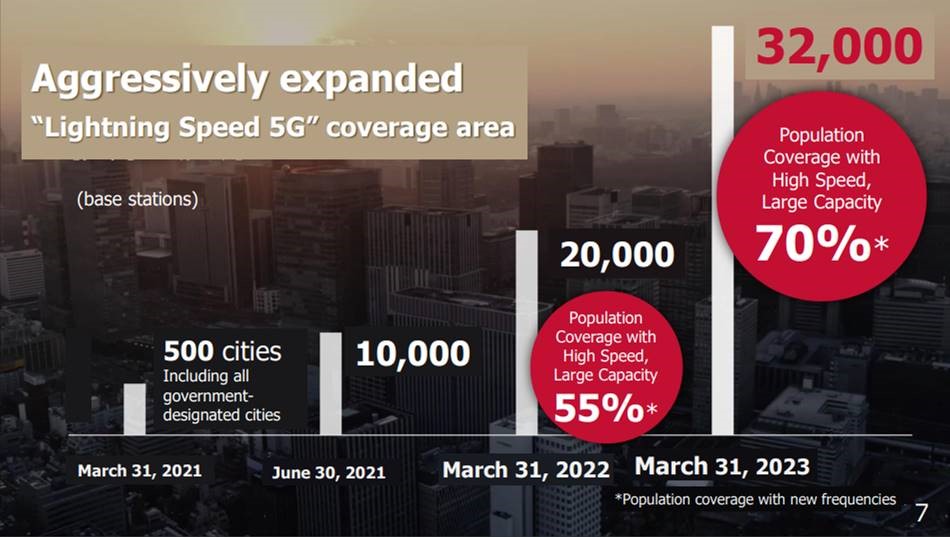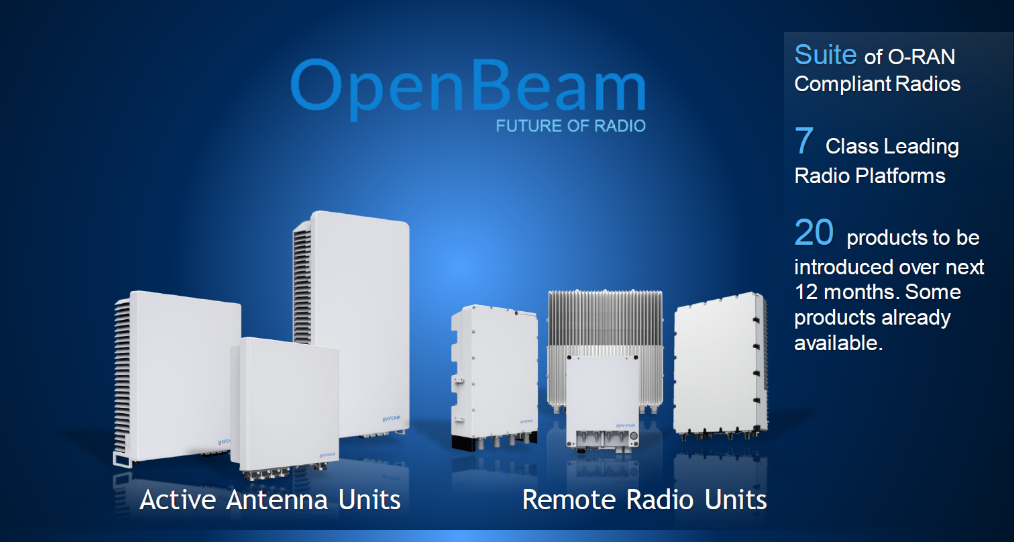Dell’Oro Group: Open RAN Momentum Is Solid; RAN equipment prices to increase
by Stefan Pongratz, VP at Dell’Oro Group
Introduction:
Open RAN ended 2021 on a solid footing. Preliminary estimates suggest that total Open RAN revenues—including O-RAN and OpenRAN radios and baseband—more than doubled for the full year 2021, ending at a much higher level than had been expected going into the year. Adoption has been mixed, however. In this blog, we review three Open RAN-related topics: (1) a recap of 2021, (2) Mobile World Congress (MWC) takeaways, and (3) expectations for 2022.
2021 Recap:
Looking back to the outlook we outlined a year ago, full-year Open RAN revenues accelerated at a faster pace than we originally expected. This gap in the output ramp is primarily the result of higher prices. LTE and 5G macro volumes were fairly consistent with expectations, but the revenue per Open RAN base stations was higher than we modeled going into 2021, especially with regard to brownfield networks. Asymmetric investment patterns between the radio and the baseband also contributed to the divergence, though this is expected to normalize as deployments increase. In addition, we underestimated the 5G price points with some of the configurations in both the Japanese and US markets.
Not surprisingly, the Asia-Pacific (APAC) region dominated the Open RAN market in 2021, supported by large-scale greenfield OpenRAN and brownfield O-RAN deployments in Japan.
From a technology perspective, LTE dominated the revenue mix initially but 5G NR is now powering the majority of investments, reflecting progress both in APAC and North America.

Mobile World Congress (MWC) Barcelona 2022:
Open RAN revenues are coming in ahead of schedule, bolstering the narrative that operators want open interfaces. Meanwhile, the progress of the technology, especially with some of the non-traditional or non-top 5 RAN suppliers has perhaps not advanced at the same pace. This, taken together with the fact that the bulk of the share movements in the RAN market is confined to traditional suppliers, is resulting in some concerns about the technology gap between the traditional RAN and emerging suppliers. A preliminary assessment of Open RAN-related radio and baseband system, component, and partnership announcements at the MWC 2022 suggests this was a mixed bag, with some suppliers announcing major portfolio enhancements.
Among the announcements that most stood out is the one relating to Mavenir’s OpenBeam radio platform. After focusing initially on software and vRAN, Mavenir decided the best way to accelerate the O-RAN ecosystem is to expand its own scope to include a broad radio portfolio. The recently announced OpenBeam family includes multiple O-RAN 7.2 macro and micro radio products supporting mmWave, sub 6 GHz Massive MIMO, and sub 6 GHz Non-Massive MIMO.

NEC announced a major expansion of its O-RAN portfolio, adding 18 new O-RUs, covering both Massive MIMO and non-Massive MIMO (4T4R, 8T8R, 32T32R, 64T64R). NEC also recently announced its intention to acquire Blue Danube.
Another major announcement was Rakuten Symphony’s entry into the Massive MIMO radio market. Rakuten Symphony is working with Qualcomm, with the objective of having a commercial Massive MIMO product ready by the end of 2023.
Recent Massive MIMO announcements should help to dispel the premise that the O-RAN architecture is not ideal for wide-band sub-6 GHz Massive MIMO deployments. We are still catching up on briefings, so it is possible that we missed some updates. But for now, we believe there are six non-top 5 RAN suppliers with commercial or upcoming O-RAN Sub-6 GHz Massive MIMO GA: Airspan, Fujitsu, Mavenir, NEC, Rakuten Symphony, and Saankhya Labs.
Putting things into the appropriate perspective, we estimate that there are more than 20 suppliers with commercial or pending O-RAN radio products, most prominently: Acceleran*, Airspan, Askey*, Baicells*, Benetel*, BLiNQ*, Blue Danube, Comba, CommScope*, Corning*, Ericsson, Fairwaves, Fujitsu, JMA*, KMW, Mavenir, MTI, NEC, Nokia, Parallel Wireless, Rakuten Symphony, Saankhya Labs, Samsung, STL, and Verana Networks* (with the asterisk at the end of a name indicating small cell only).
The asymmetric progress between basic and advanced radios can be partially attributed to the power, energy, and capex tradeoffs between typical GPP architectures and highly optimized baseband using dedicated silicon. As we discussed in a recent vRAN blog, both traditional and new macro baseband component suppliers—including Marvell, Intel, Qualcomm, and Xilinx—announced new solutions and partnerships at the MWC Barcelona 2022 event, promising to close the gap. Dell and Marvell’s new open RAN accelerator card offers performance parity with traditional RAN systems, while Qualcomm and HPE have announced a new accelerator card that will allegedly reduce operator TCO by 60%.
2022 Outlook:
Encouraged by the current state of the market, we have revised our Open RAN outlook upward for 2022, to reflect the higher baseline. After more than doubling in 2021, the relative growth rates are expected to slow somewhat, as more challenging comparisons with some of the larger deployments weigh on the market. Even with the upward short-term adjustments, we are not making any changes at this time to the long-term forecast. Open RAN is still projected to approach 15% of total RAN by 2026.
In summary, although operators want greater openness in the RAN, there is still much work ahead to realize the broader Open RAN vision, including not just open interfaces but also improved supplier diversity. Recent Open RAN activities—taken together with the MWC announcements—will help to ameliorate some of these concerns about the technology readiness, though clearly not all. Nonetheless, MWC was a step in the right direction. The continued transition from PowerPoint to trials and live networks over the next year should yield a fuller picture.
Addendum:
“Following twenty years of average macro base station price declines in the 5% to 10% range, we are now modeling RAN [radio access network] prices to increase, reflecting a wide range of factors,” Stefan Pongratz, an analyst at research and consulting firm Dell’Oro Group, wrote in response to questions from Light Reading. “In addition to the changing vendor landscape and regional aspects coming into play with China’s overall share expected to decline going forward, we have also assumed there will be some COGS [cost of goods sold] inflation due to supply-demand mismatches, though the ability for everyone to pass this on [to their customers] remains limited.”
About the Author:
Stefan Pongratz joined Dell’Oro Group in 2010 and is responsible for the firm’s Mobile RAN market and Telecom Capex research programs. While at the firm, Mr. Pongratz has expanded the RAN research and authored multiple Advanced Research Reports to ensure the program is evolving to address new RAN technologies and opportunities including small cells, 5G, Open RAN, Massive MIMO, mmWave, IoT, private wireless, and CBRS. He built the Telecom Capex coverage detailing revenues and investments of over 50 carriers worldwide.
2 thoughts on “Dell’Oro Group: Open RAN Momentum Is Solid; RAN equipment prices to increase”
Comments are closed.



The UK government is accelerating the development of Open Radio Access Network (Open RAN) technology – which allows operators to mix and match equipment rather than relying on a single supplier when building or maintaining networks – as part of its £250 million Open Networks R&D Fund. It aims to build more secure and resilient broadband and mobile infrastructure by boosting competition and innovation within the telecoms supply chain.
This collaboration, together with other steps that the Government is taking through its Diversification Strategy, aims to meet the Government and UK mobile network operators’ joint ambition to carry 35% of the UK’s mobile network traffic over open and interoperable RAN architectures by 2030. The Government will invest through a series of competitions and challenges with funding made available until the end of March 2025. These activities will encourage greater collaboration towards addressing key barriers including power efficiency, spectrum management, software platforms, systems integration and security – ensuring that the development of innovative telecoms solutions meet the performance and security requirements of mobile network operators and other network builders.
According to ReportLinker: The global Open RAN market is projected to grow from USD 1.1 billion in 2022 to USD 15.6 billion by 2027, at a Compound Annual Growth Rate (CAGR) of 70.5% during the forecast period. Advantages such as solution flexibility, reduced costs and supply chain diversity is driving the Open RAN market growth.
The adoption of Open RAN services is expected to increase among service providers and enterprises with the increasing adoption of Open RAN solutions.The Open RAN market has been segmented based on services into consulting, deployment and implementation, and support and maintenance.
These services assist end users in reducing costs, lowering operational costs, increasing overall revenues, and improving business performance.
Sub-6GHz segment is expected to account for a larger market share during the forecast period
Businesses are already on the way to Sub-6GHz 5G.Huawei proposed bands below 6 GHz as the primary working frequency of 5G.
Qualcomm announced a 5G New Radio model system and trial platform.The 5G NR prototype system operates in the Sub-6GHz spectrum bands and is utilized to showcase the company’s 5G designs to efficiently achieve multigigabit per second data rates and low latency.
Mobile operators will continue to rely heavily on the Sub-6GHz spectrum. This is because it will take time for mmWave technology to be fully developed and harmonize the availability of the new spectrum bands.
Public segment to account for the largest market share during the forecast period
Public 5G wireless networks provide the same level of service and security to all clients.But the security risk is higher in case of public access and comes from the public sharing the network.
Also, when the network is busy, it can impact all users at the same time.The spectrum is usually owned by a mobile network operator (MNO), and in the public 5G network, the service and management are the responsibility of the MNO.
The public 5G network is intended for use by the public, with tens of millions of subscribers on a given nationwide network.
Among regions, Asia Pacific recorded the highest CAGR during the forecast period
Asia Pacific constitutes thriving economies, such as Singapore, Japan, China, India, and Australia, which are expected to register high growth rates in the Open RAN market.Asia Pacific houses many large countries with a wide population spread over remote locations and wide geographical areas.
Major leading companies such as Rakuten Mobile, NTT Docomo, KDDI, Reliance Jio, Bharti Airtel, Vodafone and more are involving and contributing to Open RAN technology in Asia Pacific region which is driving the growth of the market.
https://www.prnewswire.com/news-releases/the-global-open-ran-market-is-projected-to-grow-from-usd-1-1-billion-in-2022-to-usd-15-6-billion-by-2027–at-a-compound-annual-growth-rate-cagr-of-70-5-301712449.html